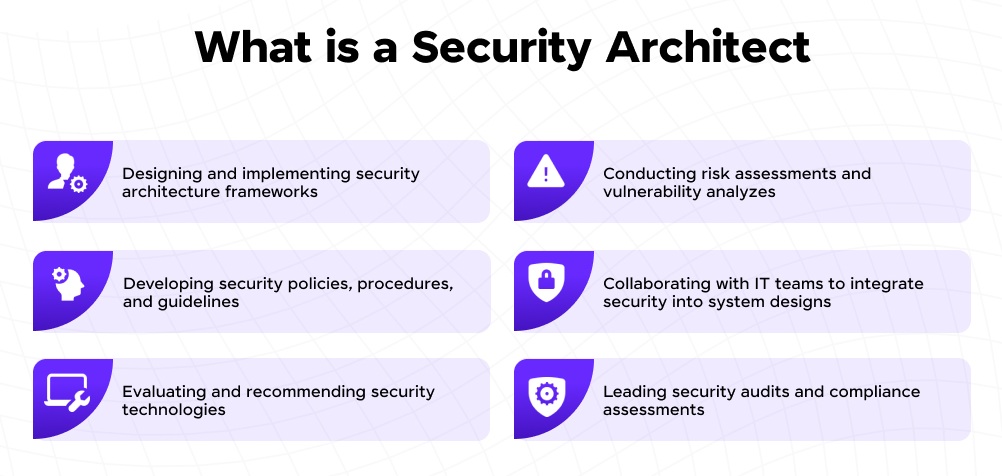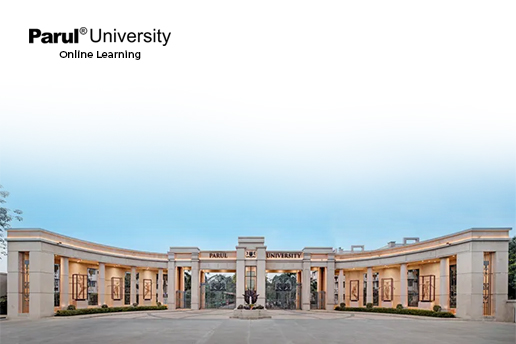Become a Security Architect: 2026 Career Guide
Table of Contents

The digital world is evolving at a breakneck pace, and with every technological leap comes a fresh wave of sophisticated threats. In this ever-shifting landscape, the security architect stands as a pivotal figure, the master planner and designer of an organisation’s impenetrable digital fortress. This isn’t just a technical job; it’s a strategic one, requiring a blend of deep technical skill, business acumen, and foresight.
If you’re contemplating a career move that places you at the intersection of high-level strategy and crucial implementation, becoming a security architect in 2026 offers both lucrative rewards and a profound sense of purpose.
This guide dives deep into what it takes to land this elite role, focusing on the essential skills, the career trajectory, and the impressive earning potential, particularly the competitive security architect salary across the globe and the specific context of the security architect salary in India.
What Exactly Does a Security Architect Do?

*guvi.in
A security architect is essentially the chief engineer of an organisation’s security infrastructure. They don’t just patch vulnerabilities; they design the entire security system from the ground up, ensuring all aspects of the business, from internal networks to cutting-edge cloud deployments, are secure by design.
Their role is broad, encompassing the full security lifecycle, from initial planning and threat modelling to system implementation, compliance auditing, and continuous improvement. It demands a holistic view of the company’s mission and its IT landscape.
Core Responsibilities: The Pillars of Security
| Responsibility Area | Key Activities |
| Strategy & Design | Developing a comprehensive security architecture that aligns with business objectives, risk appetite, and regulatory requirements. This includes establishing security standards and principles. |
| Risk Management | Performing sophisticated threat modelling, risk assessments, and vulnerability analysis to proactively identify and mitigate potential risks before system deployment. |
| System Integration | Overseeing the implementation and integration of security controls, tools, and technologies (like firewalls, IDS/IPS, and IAM systems) across all platforms. |
| Compliance & Governance | Ensuring all security designs and operations adhere to industry regulations (e.g., GDPR, HIPAA, ISO 27001) and internal security policies. |
| Collaboration & Leadership | Communicating closely with IT teams, developers (DevSecOps), and executive leadership to advocate for and communicate security requirements and strategy. |
Your 2026 Roadmap: How to Become a Security Architect
The path to becoming a security architect is not a linear one; it’s a journey built on experience, continuous learning, and strategic certification. This is not an entry-level position—it typically requires a minimum of 7-10 years of progressive experience in cybersecurity.
Phase 1: Foundational Experience (Years 1-4)
Start with a strong technical base. Roles like Security Analyst, Network Engineer, or Systems Administrator provide essential hands-on knowledge. You need to know how systems break before you can design them to be unbreakable.
Phase 2: Specialisation and Engineering (Years 5-7)
Transition into mid-level security roles, such as a Security Engineer or Penetration Tester. This is where you master specific technical domains like network security, identity and access management (IAM), or application security. Crucially, this is the time to immerse yourself in one of the major cloud platforms, setting the stage to become a proficient cloud security architect.
Phase 3: Architect-in-Training (Years 8+)
Move into a Senior Security Engineer or even an Associate Architect role. Here, your focus shifts from doing to designing. You begin to participate in strategic planning, interact with non-technical stakeholders, and start thinking about risk assessment at an enterprise level.
Key Skills to Master
| Technical Skills (Hard Skills) | Business & Leadership Skills (Soft Skills) |
| Cloud security architecture (AWS, Azure, GCP) | Strategic Thinking and Business Alignment |
| Network & Perimeter Security (Firewalls, VPNs, IDS/IPS) | Risk Management and Mitigation Frameworks |
| Identity and Access Management (IAM) | Communication (Translating technical risks for the board) |
| DevSecOps & Secure SDLC | Project Management & Budgeting |
| Cryptography and PKI | Negotiation and Stakeholder Management |
| Threat Modelling & Analysis | Leadership and Mentorship |
The Evolution of the Role: Cloud Security Architect and Cyber Security Architect

*clarusway.com
In 2026, the term security architect is increasingly specialised, driven primarily by the mass migration to cloud platforms.
The Rise of the Cloud Security Architect
The cloud security architect is a highly sought-after specialist. Their focus is solely on securing the complex environments provided by major cloud service providers (CSPs) like AWS, Azure, and Google Cloud.
Key areas of expertise for a cloud security architect include:
- Shared Responsibility Model: Understanding the delicate balance of security between the CSP and the client.
- Cloud-Native Controls: Mastery of platform-specific security tools (e.g., AWS KMS, Azure Key Vault, GCP IAM).
- Data Protection: Designing encryption, access control, and data loss prevention (DLP) strategies for data stored and processed in the cloud.
- Container and Serverless Security: Expertise in securing modern architectures like Kubernetes and AWS Lambda.
The Cyber Security Architect: The Holistic View
While often used interchangeably, the term: ‘cyber security architect‘ frequently refers to the broader, enterprise-level role. This professional handles the security of the entire IT ecosystem, on-premises systems, hybrid cloud, operational technology (OT), and application security. They build the overarching security framework that the specialised architects (like cloud or network security architects) then fit into. They are the ultimate strategists in the fight against cyber threats.
Security Architect Salary: An Investment in Expertise
The compensation for a security architect reflects the demanding, high-stakes nature of the role. You are designing systems that protect a company’s most valuable assets, and salaries are commensurate with this massive responsibility.
Global Security Architect Salary Trends (2026 Projections)
The global average salary for a security architect is exceptionally high, often exceeding six figures in major tech hubs.
| Experience Level | Average Annual Salary (USD) |
| Entry-Level Architect (5-7 years experience) | $130,000 – $160,000 |
| Senior/Principal Architect (8-12 years experience) | $170,000 – $220,000+ |
| Cloud security architect (Specialist) | $180,000 – $250,000+ |
Note: Salaries vary significantly based on location (e.g., Silicon Valley, London, or New York) and the size/type of the employer.
Security Architect Salary in India: A Rapidly Growing Market
The Indian market is experiencing an explosion in demand for skilled cybersecurity architect professionals, driven by global capability centres and a surging domestic digital economy. The security architect salary in India is highly competitive and rapidly increasing, making it one of the most lucrative IT roles in the country.
| Experience Level | Average Annual Salary (INR) |
| Mid-Level Architect (5-8 years experience) | ₹20 Lakhs – ₹35 Lakhs |
| Senior security architect (8+ years experience) | ₹35 Lakhs – ₹50 Lakhs+ |
| Specialist Architect (e.g., Cloud, Application Security) | ₹40 Lakhs – ₹70 Lakhs+ |
High-paying metro areas like Bengaluru, Pune, and Hyderabad, especially within multinational corporations (MNCs) and fintech firms, consistently offer the highest salaries for a security architect.
The substantial compensation reflects the severe skill gap. Companies are willing to pay a premium for architects who can design robust security that keeps pace with digital transformation, especially in the cloud. Investing in the right skills directly translates into a higher security architect salary.
Emerging Trends Shaping the Future of Digital Security (2026 and Beyond)
- Zero Trust Becomes Standard: Continuous verification of users and devices is replacing perimeter-based defence models.
- AI-Driven Defence Systems: Artificial intelligence and machine learning are powering predictive threat analysis and automated incident response.
- Rise of Edge and IoT Security: The expansion of connected devices demands adaptive frameworks to secure decentralized networks.
- Multi-Cloud and Hybrid Resilience: Organizations are designing interoperable protection models to manage risk across diverse environments.
- Quantum-Safe Encryption: As quantum computing advances, encryption methods are evolving to maintain data integrity.
- Privacy-Enhancing Technologies: Solutions like homomorphic encryption and differential privacy are enabling compliance without compromising usability.
- Integrated Governance: Collaboration among IT, compliance, and leadership teams is embedding cybersecurity into business strategy.
- Security as a Business Enabler: The focus is shifting from reactive defence to proactive resilience and strategic advantage.
Continuous Upskilling with Jaro Education
For a professional targeting the security architect role, which requires both technical depth and managerial/strategic planning, the following Jaro Education programs (offered in partnership with premier institutions) are the most relevant:
| Program Name | Focus | Key Topics for a Security Architect |
|---|---|---|
| PG Certificate Programme in Cyber Security Management and Data Science (IIM Nagpur) | Strategic & Managerial (Best for Architect Role) | Security architecture and Design, Security Governance, Board-Level Reporting, Risk Management, Cloud Security, Incident Response, and Integrating Data Science for threat detection. |
| Executive Programme in Artificial Intelligence and Cyber Security for Organizations (IIM Indore) | Strategy & Emerging Tech (Good for Advanced Roles) | Designing Cyber Security Frameworks for an Organization, Cloud Security, Mobile & IoT Security, Data Privacy, and applying AI & Machine Learning for advanced security. |
| Advanced Certification Programme in Cybersecurity & Ethical Hacking (IIT Guwahati) | Technical & Hands-on (Focus on Deep Skills) | Network Security, Web Application Security, Malware Analysis, Ethical Hacking/Penetration Testing, and Vulnerability Assessment—skills critical for testing an architect's design. |
Conclusion
Becoming a security architect is a career path defined by challenge, reward, and constant growth. In the dynamic environment of 2026, the need for master designers who can anticipate threats and build resilient, business-aligned security frameworks, especially in the cloud, has never been greater.
Frequently Asked Questions
What is the key difference between a security engineer and a security architect?
A Security Engineer focuses on the implementation and operation of security tools and controls (e.g., configuring firewalls, deploying SIEM). A security architect focuses on the design and strategy—they define the principles, standards, and overall blueprint that the engineer then implements. The architect asks, “What should we build?” The engineer asks, “How do we build it?”
Is a degree required to become a security architect?
While a Bachelor’s degree in Computer Science, IT, or a related field is highly recommended and often a prerequisite, significant, proven, and diverse experience (typically 10+ years) combined with top-tier certifications (like CISSP) can sometimes compensate for a lack of a specific degree. For a senior role, most successful candidates hold a relevant degree.
Which cloud platform is most important for an aspiring cloud security architect?
All three major platforms (AWS, Azure, and Google Cloud) are important. However, it’s best to master one (e.g., AWS due to its large market share) and then gain proficiency in at least one other. The underlying principles of cloud security are transferable, but platform-specific architecture knowledge is essential for a cloud security architect.
How long does it typically take to reach the security architect level?
It generally takes 7 to 10 years of progressive experience in the cybersecurity or IT field. This includes foundational roles, specialising as a security engineer, and then transitioning into a design and strategy-focused role.
What are the non-technical skills most crucial for a security architect?
The most crucial non-technical skill is communication. A security architect must be able to translate complex, high-risk technical concepts into clear, actionable, and financially justifiable terms for non-technical senior executives and business stakeholders. Risk management and strategic thinking are equally critical.

















